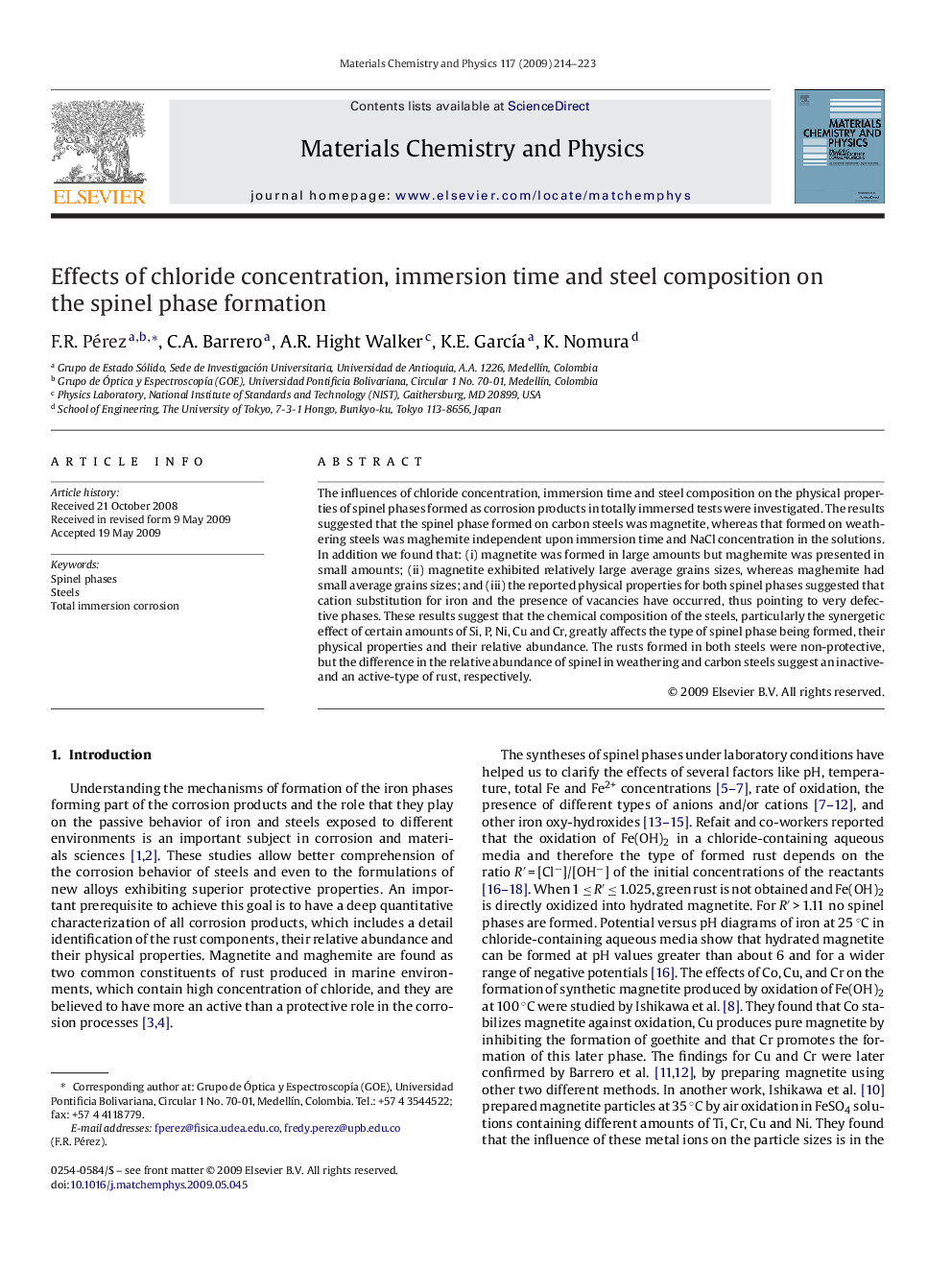| Article ID | Journal | Published Year | Pages | File Type |
|---|---|---|---|---|
| 1526349 | Materials Chemistry and Physics | 2009 | 10 Pages |
The influences of chloride concentration, immersion time and steel composition on the physical properties of spinel phases formed as corrosion products in totally immersed tests were investigated. The results suggested that the spinel phase formed on carbon steels was magnetite, whereas that formed on weathering steels was maghemite independent upon immersion time and NaCl concentration in the solutions. In addition we found that: (i) magnetite was formed in large amounts but maghemite was presented in small amounts; (ii) magnetite exhibited relatively large average grains sizes, whereas maghemite had small average grains sizes; and (iii) the reported physical properties for both spinel phases suggested that cation substitution for iron and the presence of vacancies have occurred, thus pointing to very defective phases. These results suggest that the chemical composition of the steels, particularly the synergetic effect of certain amounts of Si, P, Ni, Cu and Cr, greatly affects the type of spinel phase being formed, their physical properties and their relative abundance. The rusts formed in both steels were non-protective, but the difference in the relative abundance of spinel in weathering and carbon steels suggest an inactive- and an active-type of rust, respectively.
